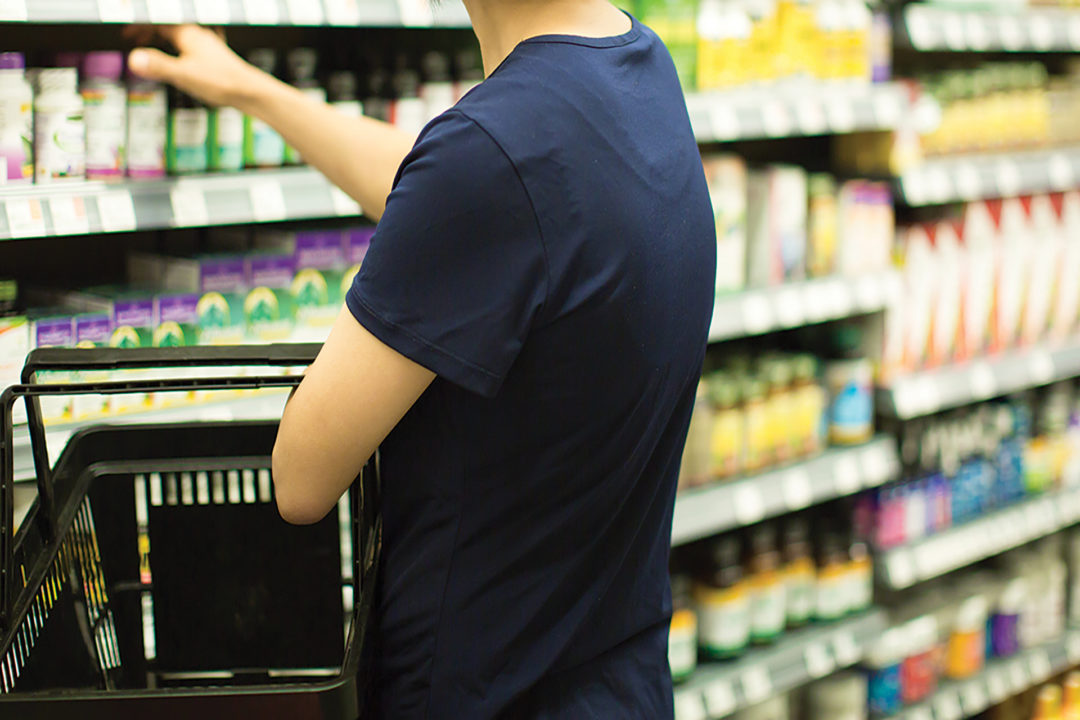Across the grocery store, we have been witnessing how the pandemic has affected retailers, brands, and shoppers from supply chain issues and inflation to the introduction of new trends and flavors to the market. During this time, shoppers’ daily routines were uprooted and replaced with hasty contingency plans, which left many households feeling unsettled and unsure of how to adjust to this new normal. For many consumers, the need to take back control and return to a sense of normalcy led them on a health and wellness journey.42%
rate at which the performance market is growing.
Since consumers could no longer visit their local gym or eat out at their favorite restaurant, they started investing in at-home equipment and cooking their own meals with healthier ingredients. According to the Bureau of Labor Statistics,the percentage of U.S. adults participating in sports and exercise hit its peak in 2020 at 24.2% compared to 21.7% in 2019. While this number has been experiencing a slight decline since, the effects of this exercise movement can still be seen in the performance market that’s growing at 42%.
Looking at the Market
When many shoppers are starting their fitness journeys, the first thing they do is research some of the best vitamins and supplements to add to their routines, whether it be a preworkout or an electrolyte to enhance their exercise regimen. Over the last few years, consumers have started to seek out the benefits of staying well hydrated, both in the gym and out, driving the growth of hydration products.Maintaining concentration, increased endurance and regulating body temperature are only a few of the benefits that consumers can reap from proper hydration, which is why hydration and electrolyte products are growing at 113%.Changes in exercise and diet typically coincide with a desire to drop some pounds, but the exercise and active nutrition market has started to transform this notion—instead of concentrating on the scale, the focus is on how a person feels, physically and mentally. This can be seen in the numbers. Out of all the subcategories in the performance nutrition category, the only one in decline is weight management formulas at -3.8%.
Having too much energy is not often a feeling that consumers struggle with; instead they are usually fighting their way through the day with the help of an energy drink or a cup of coffee, or in the case of their exercise routine, a scoop of preworkout. Meant to give you energy before a workout,preworkout products are growing at 41%as consumers seek out that extra jolt to improve their reaction time and increase stamina.
Between the advancements in delivery formats, the inclusion of global flavors, and the addition of functional ingredients, innovation is purring up in the active nutrition category, with many of its dedicated health focuses starting to branch out to other departments. Performance claims are showing up in both carbonated and non-carbonated water as an added benefit with the inclusion of functional ingredients.
Needing More Than Just Energy
Energy is an important component to any workout routine, but shoppers interested in their overall health and wellness and how exercise plays a role are looking for energy and performance products that have an added functionality outside of energy support.With increased exercise comes the sought-after “runner’s high” or increased endorphins, but even so, consumers who work out to improve their mental health are searching for products that have added mood support to supplement this natural endorphin production—mood support products under performance nutrition are growing 12.2%.
Either mixed into a shake or taken as a dry scoop, protein supplements and meal replacements are being integrated into shoppers’ exercise regimens, not only for the protein, but also for the added functional benefits.Products with immune health and cognitive health claims/ingredients are growing at 103% and 116% respectively.
As consumers have started to return to work and their busy routines juggling household responsibilities, they are seeking out cognitive ingredients in their products to help improve their concentration and retention. Even almost three years after the pandemic, immune health is still a priority for consumers as they want to maintain their wellness and hold off seasonal illnesses.
Remaining active and maintaining overall wellness have always gone hand in hand, but the performance nutrition category is further adapting to this ideology and creating products that nourish the mind and body.
Head towww.WholeFoodsMagazine.comto access links and additional information. And for more on Active Nutrition research and innovations, turn to page 18 of this issue for feature coverage of the growing category. Plus, for more SPINS insights into the Active Aging category, catch the on-demand version of Scott Dicker's session from the Naturally Informed virtual eventActive Aging: Mastering the Market,which took place November 16-18. Register to access the content atwww.NaturallyInformed.net. WF










